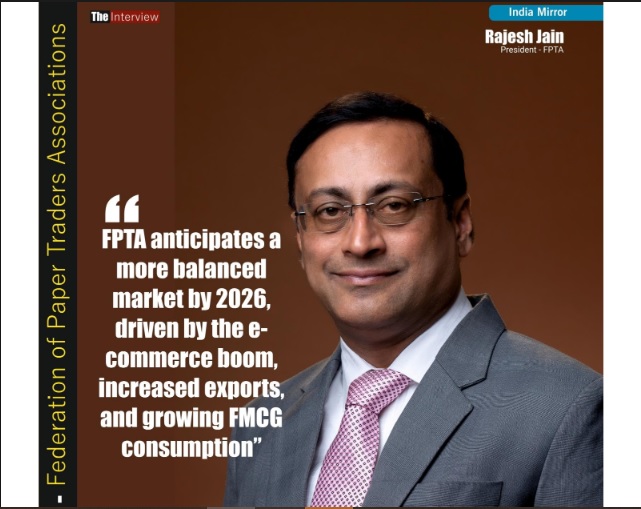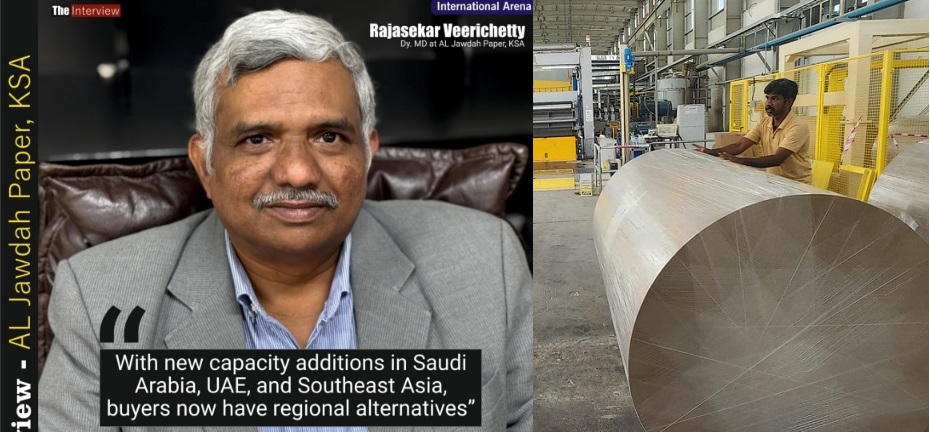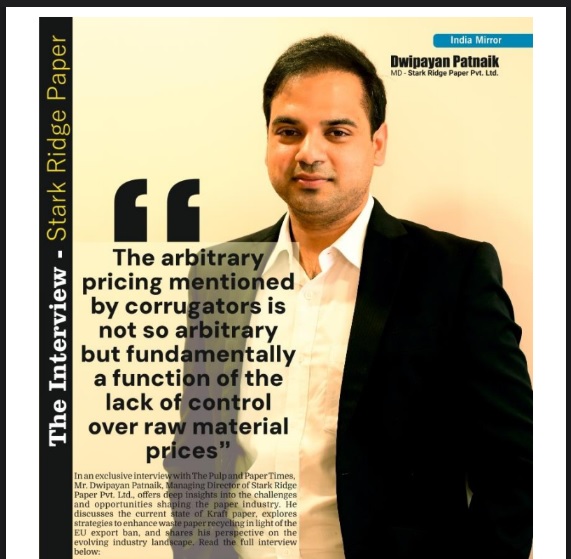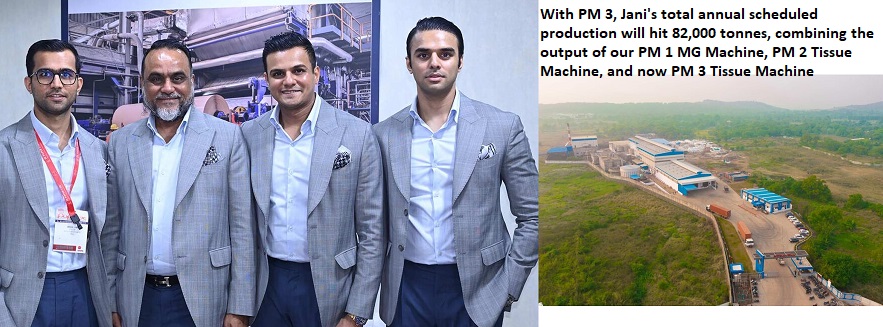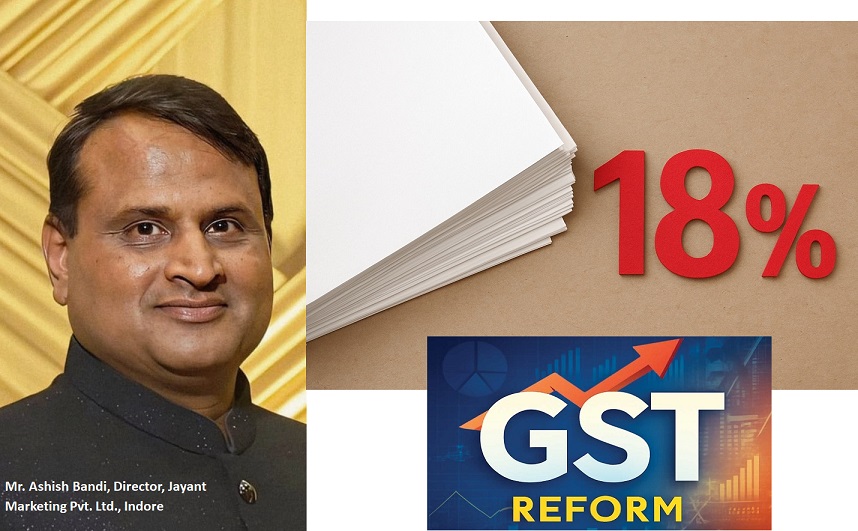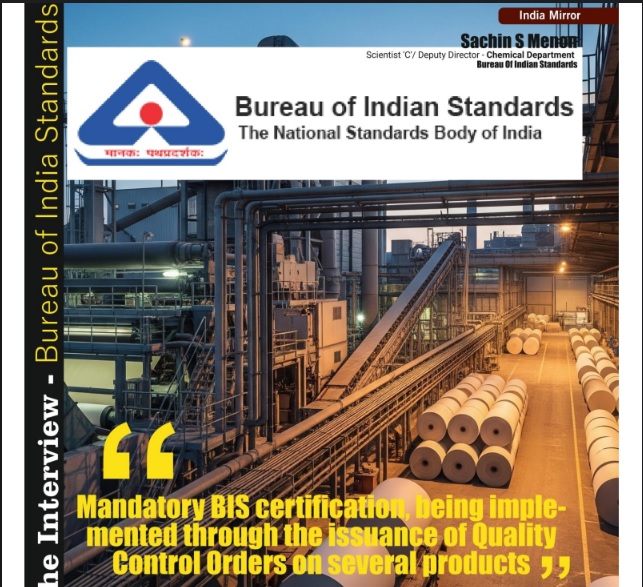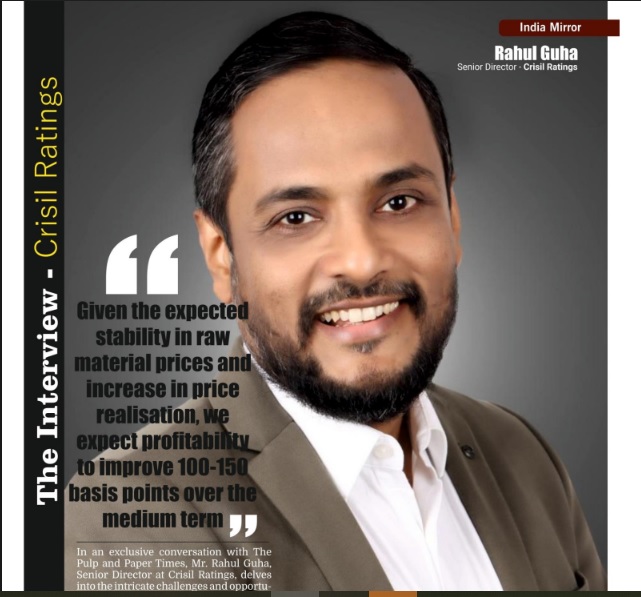“Foreign suppliers are offering paper at competitive cost than domestic mills,” says Rithwik Vijay Shekar, ED of Vamshadhara Paper Mills

“Foreign suppliers are offering paper at competitive cost than domestic mills,” says Rithwik Vijay Shekar, ED of Vamshadhara Paper Mills
- The current imbalance between supply and demand is anticipated to persist for the next 2 to 3 years
- Enhancing our capabilities by updating equipment to venture into the production of writing and printing paper
- Exploring alternative sources such as agro-based raw materials can provide further avenues to mitigate the impact of the EU's export ban
In an exclusive conversation with The Pulp and Paper Times, Mr. Rithwik Vijay Shekar, Executive Director, Vamshadhara Paper Mills Ltd., delves into the intricate challenges and opportunities within the paper industry. Shedding light on the current scenario of Kraft and Newsprint paper, He also points out the risk associated with waste paper procumbent amidst EU export ban, Mr. Rithwik shares his invaluable insights into the nuanced landscape of the industry. Here is his full Interview:
The Pulp and Paper Times
Q:Please give us a small introduction of Vamshadhara Group.
Vamshadhara Paper Mills Ltd specialises in kraft paper (both lower and higher gsm) and newsprint paper for diverse applications like packaging, printing, and publishing. The company prioritizes sustainability, sourcing raw materials responsibly, minimizing waste, and ensuring no harm to the local community.
With a strong commitment to customer satisfaction, Vamshadhara Paper Mills has grown significantly. Its Srikakulam facility in North coastal Andhra Pradesh produces 4200 TPA of Newsprint and Kraft varieties. The white division boasts a state-of-the-art paper machine using recycled fibers and advanced technologies.
In Chennai, the company operates a 4600 ton per month kraft paper manufacturing plant known for high-quality products, emphasizing its founder's vision of creating a sustainable and leading paper manufacturing company in the industry.
Q: How do you evaluate your journey in Paper Industry since your establishment?
Since our establishment in 1983 as a 300-ton-per-month Kraft manufacturing facility in Srikakulam, Vamshadhara Paper Mills Ltd has experienced significant growth and expansion in the paper industry. Today, we operate two units, producing 6500 tons per month of Kraft paper and an additional 2200 tons per month of Newspaper in Srikakulam and Chennai. Our journey is marked by a commitment to sustainability and at the same time adapting to customer needs. With a focus on technological advancements and environmental responsibility, we've not only scaled our production capacity but diversified our product offerings. While proud of our achievements, we remain forward-looking, anticipating continued success in the dynamic paper industry.
Q:Excess Capacity and Export decline have hit hard to Kraft and Duplex segment across India. Do you think both factors are the main reasons behind a sluggish market or the organic growth of 6 to 7% per annum vanishing or reducing due to recession, inflation and war?
The challenging market conditions are primarily driven by excess production and decreased exports, with additional impact from broader economic factors like recession, inflation, and war. Notably, companies, including major players like Flipkart, are adapting to the situation by making cost-effective changes, such as switching to reusable plastic crate delivery instead of traditional boxes. These adjustments reflect the industry's efforts to navigate challenges and control costs in response to the evolving economic landscape.
Q: Vamshadhara Paper Mills also produces newsprint; can you throw some light on the newsprint market in the context of post-lockdown?
Over the past decade, as the world underwent a digital transition, India stood as one of the last strongholds of print media. Circulation of newspapers in both English and Indian languages steadily increased, defying global trends. However, the onset of the COVID-19 pandemic brought unprecedented challenges to the print industry.
Concerns about the virus's transmission through newspapers led to housing societies blocking deliveries across the country. In response, some newspapers temporarily suspended production in March, coinciding with the lockdown. Circulation plummeted, and advertising, a key revenue source, vanished. Even as the COVID-19 situation fluctuated, delivery blockades persisted in many cities.
Few months into this delivery crisis, PDF versions of newspapers and magazines began to be emailed free to readers nationwide. With increased accessibility and affordability of internet and smartphones, many households shifted preference to online news sources, resulting in a significant decline in newspaper consumption. This shift has impacted the industry's capacity, which is currently operating at only 50% of its potential.
The market still remains far from its pre-COVID levels. The struggle continues as the print industry adapts to changing reader habits and navigates the ongoing challenges presented by the pandemic.
Q: New capacities in South East Asia, China, and in GCC have really turned down the export from India. Do you think this export decline will remain permanently? Or if not then why?
The impact of new kraft paper mills in South East Asia, China, and the GCC extends beyond a substantial decline in exports; it has also led to a noteworthy influence on the local market as well. The influx of these mills has prompted a situation where foreign suppliers are offering paper at competitive cost than domestic mills. The current imbalance between supply and demand is anticipated to persist for the next 2 to 3 years, requiring a normalization period. Upon absorption of the current manufacturing quantities, a potential resurgence in exports may be seen. (Provided no new capacities are planned in the next couple of years)
Q: Waste paper procurement was a tough task for paper mills when the rate has been increased the double from pre-lockdown pricing. How does your paper mill ensure a smooth raw material supply during the pandemic?
Navigating the challenges of waste paper procurement during the pandemic presented a formidable task. The limited generation and collection compelled us to offer significantly higher rates for raw materials. To ensure a smooth supply chain, our proactive approach always involved in us maintaining a substantial stock of 45-60 days, even before pre-covid times.
Initially, we operated with the available stock, and as lockdown restrictions eased, we seized the opportunity to procure a larger quantity, going above our usual requirements. However, it's important to note that there were instances where manufacturing certain grades of paper had to be temporarily halted due to the unavailability of high-strength raw materials. Despite these challenges, our strategic efforts allowed us to manage operations effectively during periods of tight restrictions.
Q: How do you project the growth of the Kraft paper segment in the coming 2 to 3 years?
While the growth in the Kraft paper segment remains steady, the upcoming two years pose unique challenges for manufacturers. Despite the ongoing expansion in capacities, the combination of increased competition and a weakened export market adds complexity to the industry landscape. Navigating this period will require strategic adaptability and resilience as Kraft paper manufacturers strive to maintain their position in an evolving market.
Q: Is Vamshadhara group undergoing any expansion? if yes, please elaborate
In our current market assessment, we recognize the inherent risks associated with expansion due to prevalent weak demand/excess capacity. Rather than increasing production quantity, our strategic approach involves diversifying our product offerings within the kraft paper segment. Additionally, we are in the process of enhancing our capabilities by updating equipment to venture into the production of writing and printing paper.
Q: COVID pandemic has triggered e-commerce sale, people tend to do shopping online which has generated the kraft paper demand multi-fold, what new trend you are assuming in kraft paper packaging that will the boost the e-commerce sale which survives long last?
With the impending plastic ban and increasing emphasis on sustainability, paper bags are poised to become the next big thing in packaging. Already gaining momentum, their popularity is expected to soar as eco-conscious consumers seek alternatives to plastic. Additionally, an emerging trend could be the use of paper moulds for packaging products, offering a sustainable and innovative solution that aligns with evolving consumer preferences. These trends not only reflect a shift towards eco-friendly practices but also present exciting opportunities for the future of kraft paper packaging in the e-commerce landscape.
Q: The EU Commission has issued a proposal for the new legislation on the export of waste (Proposal for regulation by the European Parliament and the Council on shipments of waste), which will also rule the exports of waste paper. This proposed regulation will be implemented by 2025 with certain trade obstacles. It will restrict waste paper export to India and other countries. The situation is going to be worse. Recycled paper mills are heavily dependent on imported OCC. What solution does GPBL think about this problem?
India's paper mills currently face a significant challenge due to their heavy reliance on imported raw materials, particularly in the wake of the EU's proposed ban on waste paper exports in 2025. This impending restriction highlights the urgent need for India to bolster its domestic recycling infrastructure. By investing in domestic recycling facilities and raising awareness among the public about the importance of recycling, additionally, exploring alternative sources such as agro-based raw materials can provide further avenues to mitigate the impact of the EU's export ban and ensure the continued operation of paper mills at full capacity (Govt help is needed in setting up mother pulp mills in strategic locations to produce pulp for agro-residues). It's a proactive approach that not only addresses immediate challenges but also builds long-term resilience in India's paper industry.
Q: After Gujarat, Telangana & Andhra Pradesh both are coming up as a growing hub for new paper mills, How do assess this point?
The growth of Telangana has indeed been the driving force in recent years. However, the proliferation of new paper mills in the region has outpaced the actual demand, potentially leading to challenges for mills to operate at full capacity. This oversupply situation could mirror the scenario seen in Gujarat, where mills faced difficulties and some even had to shut down permanently. Such developments indicate a concerning trend, suggesting that the current situation in Telangana and Andhra Pradesh may not be ideal for paper mills.
Web Title: “Foreign suppliers are offering paper at competitive cost than domestic mills,” says Rithwik Vijay Shekar, ED of Vamshadhara Paper Mills




 Join WhatsApp Group
Join WhatsApp Group Join Telegram Channel
Join Telegram Channel Join YouTube Channel
Join YouTube Channel Join Job Channel (View | Submit Jobs)
Join Job Channel (View | Submit Jobs) Join Buy Sell Channel (Free to Submit)
Join Buy Sell Channel (Free to Submit) Paper News Headlines Channel (Free to read)
Paper News Headlines Channel (Free to read)



